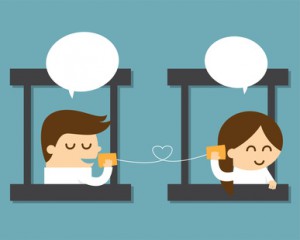The Art of Listening is More Than Responding

Responsive listening is a great start to the art of listening. But it is not art of listening. Responsive listening includes hearing the wishes of another person, considering our own desires, and arriving at a mutual goal, one we can both agree to. We engage in this sort of listening all the time (at least I hope you do). Anything from deciding what to have for dinner to buying a new car to where we go on vacation involves this type of responsive listening. And, this type of listening makes our relationships more congenial and cooperative. It concludes the important business of daily life. However, it does not build the deep intimacy we long for in marriage. To build deep intimacy we need to listen for more than mutual goals. We need to listen at a deeper level. We need to engage in the art of attentive listening.
The art of attentive listening moves us toward deeper emotional intimacy. It does not merely exchange information or share in mutual problem-solving. No, the art of attentive listening shares vulnerabilities and draws us together. It involves three things.
- First, the art of attentive listening demands we set aside our personal agenda (for a time) so we can focus on the other person and what they mean to say. We will not think about our own responses and so satisfy our agenda to sound wise. We will not think about a counter argument to fulfill our agenda of “helping them see things differently.” We will not even think of a good compromise so we can negotiate an option that satisfies both their agenda and our agenda. We will simply focus on them–their emotion, their intent, their meaning, their agenda.
- Second, the art of attentive listening requires that we use verbal and nonverbal cues to communicate our attention and understanding. The person who listens attentively responds with facial expressions of understanding and focused attention. They ask questions for further clarification and understanding. They invite further comment with gestures and short verbal cues (“go on,” “really,” “oh my,” “what?”).
- Third, the art of attentive listening involves curiosity not judgment. A person truly adept at attentive listening hears more than the words of the speaker. They “hear” the other person’s facial expression, gestures, and body language. And, they do not respond with judgment. They respond with curiosity instead. They express loving curiosity about the other person and the meaning or intent of what they are communicating. They want to know how the topic has impacted that person emotionally and mentally. Those who listen attentively are genuinely curious about the other person and what they have to say.
Of course, we can’t engage in this type of attentive listening all the time. There is a place for responsive listening, compromise, and the completion of daily business. However, marriages can get stuck in a pattern of responsive listening, a pattern of only communicating to carry out the daily business of running a family and home. They become business partners rather than a married couple. To keep a marriage strong, we need the intimacy that we gain only through the art of attentive listening. Give it a try. Take the initiative. Set aside your agenda for an evening and engage in the art of attentive listening toward your spouse. You will be amazed at the intimacy that blossoms from this practice.
-0 Comment-